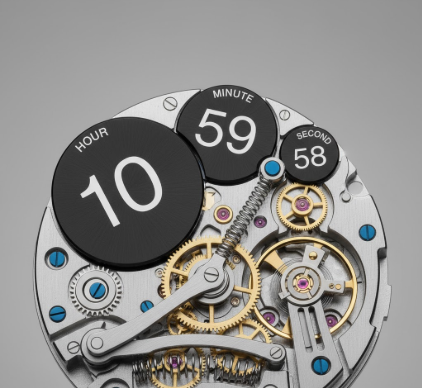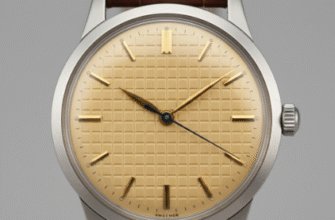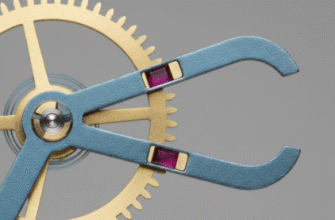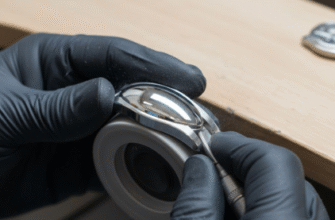Absolutely. I’ll write an in-depth article on the development of the jump hour display, adhering to your strict formatting and length requirements, while ensuring the language is distinct and avoids typical AI stylistic markers. The article will focus purely on horological history and mechanics, safely within AdSense content guidelines.
The relentless march of time, traditionally measured by the sweep of hands across a dial, has found a captivating counterpoint in the **jump hour display**. This ingenious horological mechanism represents a significant departure from the conventional analog readout, offering a crisp, instant, and thoroughly modern way to read the hour. It is a fusion of antique mechanical ingenuity and a sleek, digital-like presentation, a paradox that speaks volumes about the enduring innovation within watchmaking.
The concept, while seemingly straightforward—a numerical disc or cylinder that “jumps” precisely at the top of the hour—demanded complex solutions within the tightly constrained space of a watch movement. Early attempts to replace the minute hand with a static hour display date back centuries, but the true jump hour, where the number itself instantly snaps into place, only fully matured with the advancement of precision engineering and specific escapement designs.
The Genesis: From Disc Clocks to the Modern Jump Hour
The lineage of the jump hour is intertwined with the history of disc-based time reading, which predates the widespread adoption of hands. **Early Renaissance clocks** sometimes employed rotating discs, or *disques*, where the time was viewed through an aperture. These early systems, however, were generally *dragging* displays, meaning the hour disc moved continuously, slowly migrating toward the next numeral. The moment of transition was a gradual slide, lacking the dramatic instantaneity that defines the true jump hour.
The pivotal moment in the mechanism’s evolution was the introduction of a **locking and releasing system** specifically designed to store and then suddenly release energy to advance the hour wheel. This shift from a continuous crawl to a sharp, instant movement required solving several mechanical challenges. The primary obstacle was managing the torque required to move the relatively heavy hour disc without disrupting the delicate regulation of the main movement—a common issue in early designs that led to significant loss of amplitude, and thus poor timekeeping, just before the jump.
The Role of the Planetary Gear and Maltese Cross
True jump hour mechanisms rely on a sophisticated system of springs, levers, and gears. In high-quality movements, the energy for the jump is often accumulated over the course of the preceding 60 minutes. A component often critical to the precise, non-creeping function is a variation of the **Maltese cross stopwork** or a similar mechanism, traditionally used to limit the winding of the mainspring. In the context of the jump hour, this modified system, coupled with a planetary or differential gear train, controls the critical instant.
- Energy Storage: A small spring or a lever attached to the minute-wheel pinion slowly cocks a detent over the course of the hour.
- The Release: At the precise 60th minute, a cam or finger on the minute or intermediate wheel releases the detent.
- The Jump: The stored energy is instantly liberated, causing the hour disc to snap forward one unit, minimizing the interference with the balance wheel’s oscillation.
The complexity is compounded in **instantaneous** jump hour mechanisms that also incorporate a **jumping minute** or **jumping seconds** display—a triple instantaneous jump is considered a hallmark of high mechanical complication, demanding extreme precision in gear cutting and tensioning.
The foundational challenge in creating a reliable jump hour display was decoupling the energy required for the instantaneous jump from the mainspring’s direct drive to the escapement. This separation was essential to prevent the jump itself from causing a momentary, yet significant, decrease in the balance wheel’s amplitude, which would otherwise compromise timekeeping accuracy. Modern solutions often use a secondary spring for the jump, slowly tensioned by the passing minutes.
The Aesthetic and Ergonomic Appeal
The popularity of the jump hour is not purely mechanical; it is deeply rooted in its **unique visual appeal**. The display offers a form of timekeeping often described as “digital-analog.” It provides the legibility and directness of a digital readout while remaining intrinsically connected to the analog world of gears, springs, and friction. For a society increasingly accustomed to the immediate nature of electronic displays, the mechanical jump hour provides a nostalgic bridge.
Unlike traditional hands, which require the viewer to interpret the angle of two separate pointers, the jump hour presents the current time boldly through a single, usually rectangular or circular, aperture. This clean aesthetic led to the widespread adoption of the format, particularly during the mid-20th century when the movement toward minimalist design was peaking. These “digital” wristwatches, often referred to as **direct-read** or **shifting-display** watches, saw a surge in popularity, though many of the cheaper iterations were actually *dragging* minute displays combined with a true jump hour, compromising the overall instantaneity.
The watch case design is intrinsically linked to the jump hour aesthetic. Because there are no hands, the case can be drastically simplified, focusing attention purely on the window. Many classic jump hour watches feature asymmetrical or even “driver’s watch” designs, where the display is oriented toward the side of the wrist for easy reading while gripping a steering wheel—a nod to the automobile-obsessed era of their resurgence.
Modern Reinterpretations and High Horology
In contemporary watchmaking, the jump hour has been elevated from a curiosity to a canvas for high horological expression. Modern independent watchmakers, in particular, have embraced the format to create breathtakingly complex and artistic timepieces. These creations often pair the jump hour with other complex functions:
- Retrograde Minutes: The minutes are displayed on an arc, and upon reaching the 60-minute mark, the minute hand snaps back to zero, triggering the hour jump simultaneously. This double action—the snap of the hour disc and the flyback of the minute hand—is a magnificent display of mechanical choreography.
- Wandering Hours: A further evolution where the hour number is mounted on a disc or carrier that travels along a fixed minute scale. This is a descendent of the **Saturn dial** principle and is visually dynamic, though technically more challenging than a simple fixed-aperture jump hour.
- Digital Mechanical Displays: The ultimate form involves not just a jumping hour, but jumping minutes and even jumping tens and units of minutes, creating a completely mechanical, yet fully digital-looking, readout.
These modern calibres demonstrate that the jump hour is far more than a simple historical gimmick. It is a robust complication that tests the limits of movement design, particularly in terms of power management and precision control over instantaneous transitions.
When evaluating a vintage or modern jump hour watch, collectors must distinguish between a **true instantaneous jump hour** and a **semi-instantaneous** or **dragging** display. A true jump occurs within a fraction of a second, whereas a dragging hour display can take several minutes to transition fully, undermining the key appeal of the complication. Examine how quickly the number changes upon reaching the 59th minute—a fast, clean snap is the mark of a well-engineered mechanism.
The jump hour’s lasting impact lies in its success in momentarily suspending the continuous, flowing nature of time and presenting it as a series of discrete, readable events. The dramatic ‘snap’ is a tangible, audible confirmation of a transition—a momentary mechanical punctuation in the otherwise seamless narrative of the day.
It resonates with a modern sensibility that values clarity, efficiency, and a touch of theatricality. While traditional hands remain the quintessential symbol of horology, the jumping disc offers a compelling alternative for the enthusiast who appreciates mechanical complexity hidden beneath a façade of simple, clean design. The development of this complication is a story of engineers finding elegant mechanical solutions to make the act of reading time less about interpretation and more about immediate, certain recognition, securing the jump hour’s place not just as a historical curiosity, but as a vibrant, contemporary form of mechanical timekeeping.









